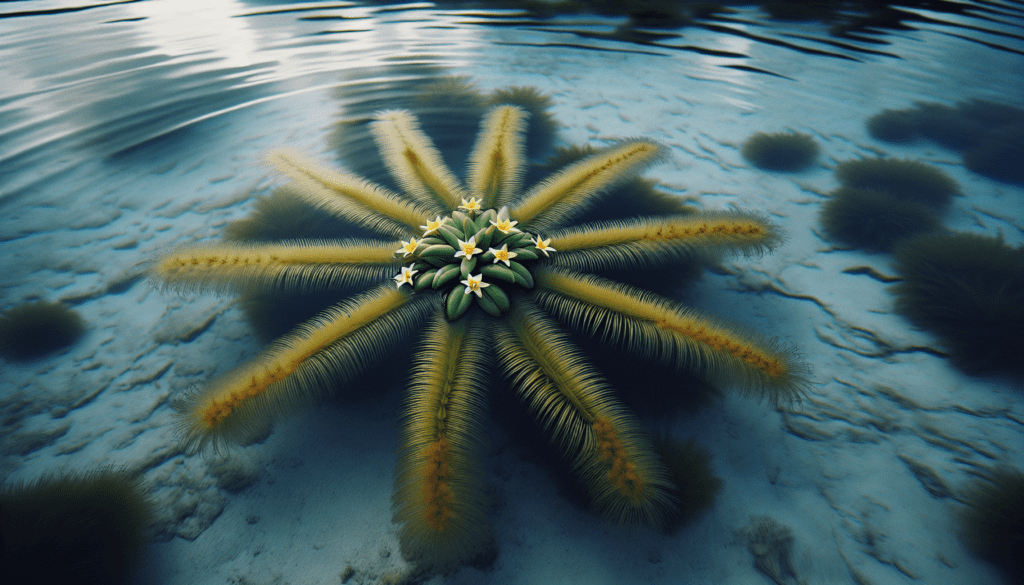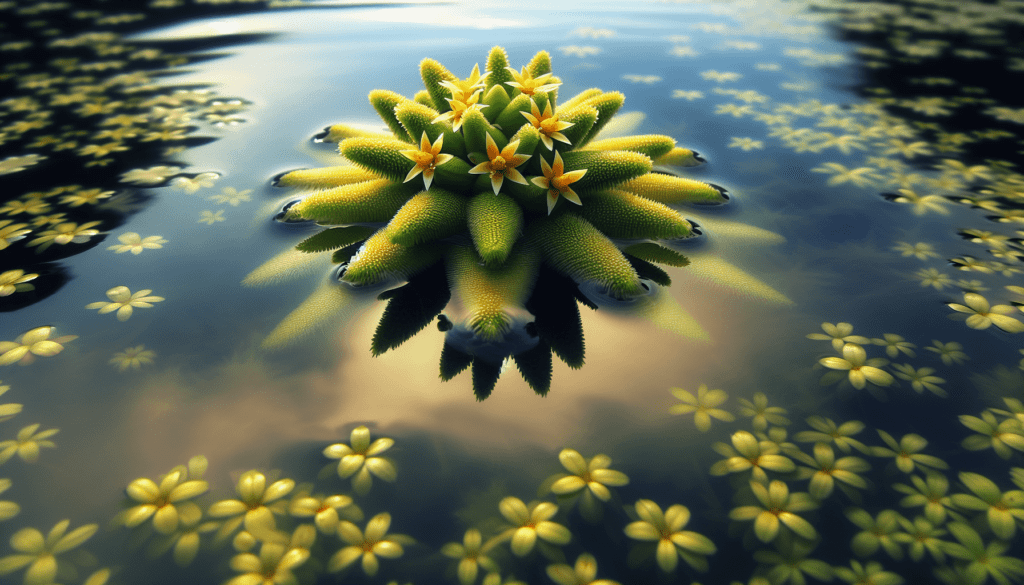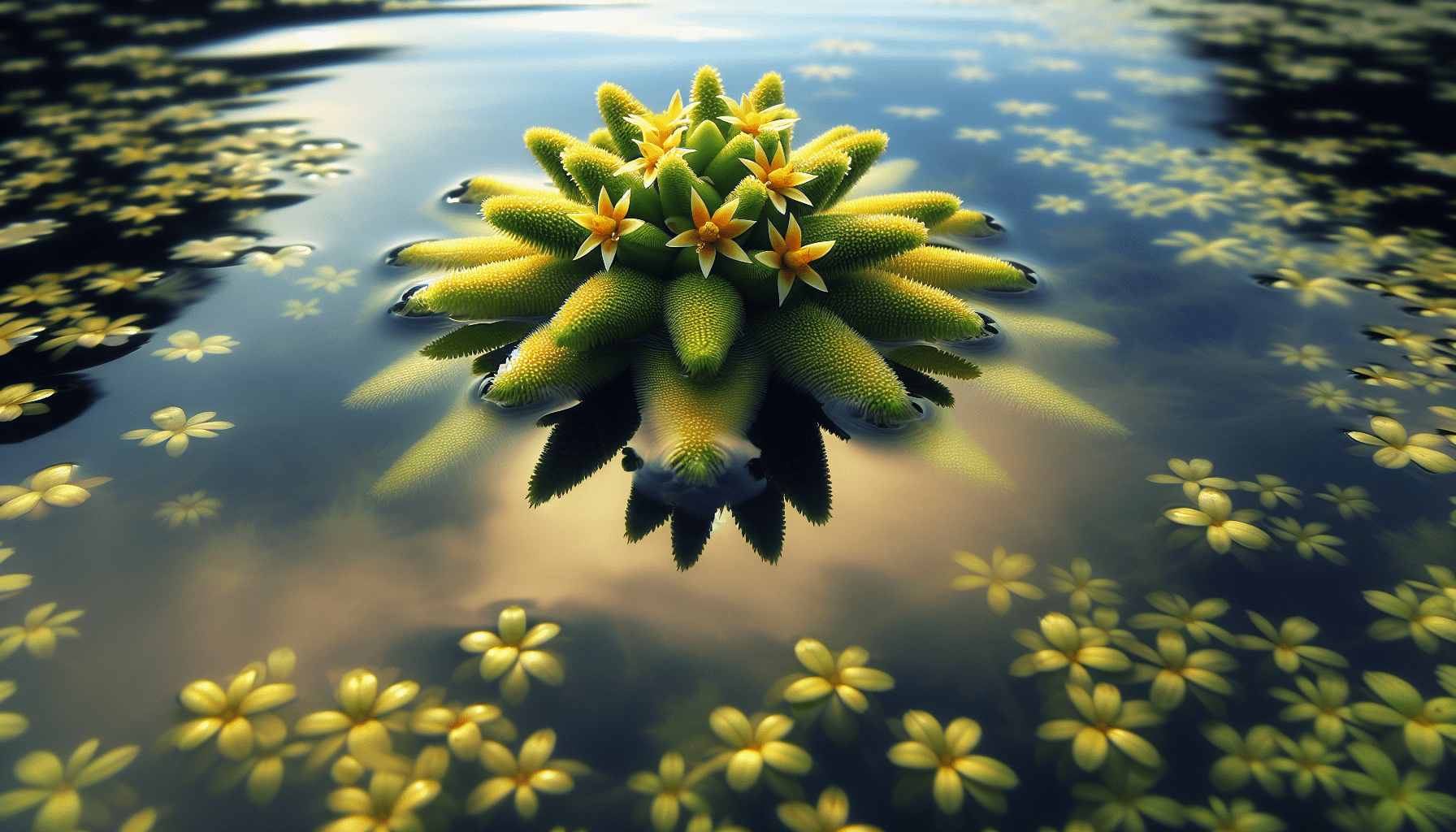In the intriguing world of aquatic botany, understanding diverse plant life forms and their unique characteristics can present an exciting challenge. The aquatic plant Callitriche, often overlooked, is one such specimen that offers fascinating insights. From its unique propagation methods to its dualistic growth habit and ecological significance, this article provides an enticing exploration into the world of the underestimated Callitriche. As you turn your attention to the following discourse, prepare to uncover more about this unusual aquatic plant. Allow your perspective to be broadened and your botanical knowledge enriched.
Understanding Aquatic Plants
The world of aquatic plants, also known as hydrophytes or macrophytes, is diverse and far-reaching. As the name implies, this assembly of flora thrives in water-rich environments, namely in ponds, rivers, and seas. They are structurally adapted to grow in water or in soil that is periodically saturated with water, and are a critical component of aquatic ecosystems. They stabilize the environment, provide shelter for swimming animals and even reproduce in the water. They are often sorted into categories based on their location and growth habit, such as submerged, emergent, and free-floating.
Explaining the concept of aquatic plants
The term aquatic plants address a broad array of vegetation, each ideally adapted to life in water-saturated environments. By nature, they serve unique roles in the ecosystems they occur, providing food, oxygen, and shelter for a vast spectrum of wildlife. Moreover, they enrich their habitat, extracting nutrients for growth and helping to purify the water for the animals that inhabit it, whilst playing an influential part in the carbon cycle within their aquatic environment.
Different species of aquatic plants
The range of aquatic plant species is immense, each having differentiated according to the specific requirements of their respective ecosystem. Species can range from algae, like seaweed, to floating plants, like the lotus, and to fully submerged species, like seagrass. Other common types include the water lily, duckweed, pondweed, and eelgrass.
Importance of aquatic plants to the ecosystem
Aquatic plants play a crucial role in the ecosystem. As primary producers, they are the foundation of the aquatic food chain, nourishing and sustaining fish and other animals. They also produce oxygen through photosynthesis, contributing to the health of the ecosystem. Moreover, some species provide nesting and breeding habitats for certain animals and others help prevent shore soil erosion by slowing down water flow.
Introduction to Callitriche
From the extensive world of aquatic plants emerges a unique genus, Callitriche, also known as water starwort. This genus comprising of small, herbaceous, and mostly aquatic plants, captivates scientists and aquatic plant enthusiasts alike due to its unique adaptations and contributions to the ecosystem.
Classification of Callitriche
The genus Callitriche falls under the Plantaginaceae family, known for its attractive bloom, most of which are suited to life fully submerged in water. They usually have dimorphic leaves, with submersed leaves looking fundamentally different from those floating on the water’s surface. The genus has around 40 species, amongst the most common are Callitriche stagnalis, Callitriche hamulata, and Callitriche brutia.
Regions where Callitriche is found
The members of the Callitriche genus are found distributed all over the world, with certain species confined to certain regions. Some are found predominantly in North and South America, while others are specific to Europe. Certain species, such as Callitriche brutia, is native to Southern Europe while others like Callitriche stagnalis have a much more widespread distribution.

Biology and Physiology of Callitriche
The aspects of the biology and physiology of any plant give it a unique understanding of its specific forms and functions in the ecosystem. Callitriche is no exception.
Physical characteristics of Callitriche
Callitriche manifests the growth form of a mat or tuft and can grow in erect, decumbent or sprawling growth habits. It performs a unique morphological trait in response to its living environment. When growing submersed, the leaves are linear and opposite; however, when the plants reach the water surface, the leaves become round and gain a rosette form. The flowers are small and inconspicuous, many at the base of leaves or in the leaf axils.
Sexual reproduction and seed production in Callitriche
The peculiar shape of the female flower in some Callitriche species, along with the fact that pollination happens underwater, has drawn researchers’ attention. This plant can reproduce both sexually and vegetatively, and can self-pollinate. After pollination, they produce fruits known as utricles, which hold a singular seed.
Growth and development stages of Callitriche
Callitriche has a remarkable plasticity, it is capable of rapid growth and proliferation, particularly in nutrient-rich waters. The growth pattern often results in a dense mat-like cover subsurface and on the surface water edges. Vegetative growth is characterized by the elongation of the stem and the production of leaves while sexual maturity is achieved when flowers and fruit are produced by the plant.
Habitats of Callitriche
Understanding the habitat where a plant grows gives clues as to how it is able to adjust to its environment. This understanding is essential when studying the resilient genus, Callitriche.
Where Callitriche is predominantly found
You will find Callitriche species in a wide variety of water bodies and moist habitats including ponds, lakes, slow running waters, ditches, marshes, and even puddles. Some species prefer still or slow-moving water, while others thrive in fast-flowing rivers and streams.
Climate conditions ideal for its growth
Callitriche species can grow in a range of climatic conditions from temperate to subtropical climates. They usually prefer moist soils, or in fresh to somewhat brackish water, in conditions ranging from full sunlight to light shade.
Adaptation strategies of Callitriche
One of the most notable adaptations of Callitriche is their ability to adjust their leaf morphology according to their environment. Aquatic conditions trigger the growth of long, thin leaves while terrestrial conditions cause the sprouting of broader, shorter leaves. This characteristic flexible response aids their survival in different habitats, advocating their resilience.

Role of Callitriche in its Ecosystem
Every plant participates in several ecosystem functions that contribute to the balancing and enhancing of its habitat. Similarly, Callitriche serves many roles in its aquatic ecosystem.
Its function in the ecosystem
Callitriche plays countless beneficial roles in its ecosystem. It acts as a primary producer, supplying food to aquatic fauna while also offering shelter and spawning grounds for fish. Its role in water purification sustains the overall health of the ecosystem.
How it contributes to its habitat
By reducing water flow velocity and providing cover, it helps decrease erosion and sedimentation. It also enhances water quality by absorbing excess nutrients and harmful toxins, a critical process in eutrophic waters.
Cultivating Callitriche
Propagating Callitriche can be a rewarding experience whether it’s for a home pond, aquarium, or research purposes.
Cultivation practices for Callitriche
Thanks to its robust nature, cultivating Callitriche is generally straightforward. It can be propagated from seeds but is often grown through stem cuttings. It’s critical to maintain a nutrient-rich water source. Placing the plant near a light source will foster growth since it facilitates photosynthesis.
Ideal conditions for the growth of Callitriche
Providing optimal growth conditions is key for effectively cultivating Callitriche. It prefers a neutral to mildly acidic pH, thrives in a broad light spectrum but does exceptionally well under high light conditions. The water level and temperature will vary depending on the specific species of Callitriche cultivated.
Uses of Callitriche
Beyond the contributions to the bio-system, other potentials of Callitriche have also been identified.
Commercial uses of Callitriche
Some species of Callitriche, such as Callitriche brutia, Callitriche stagnalis, are coveted in the aquascaping industry for their lush growth and ease of care. They are sold commercially for use in aquariums, terrariums, and small ponds. Callitriche can also be used as a model plant species for environmental research and education.
Medicinal value, if any, of Callitriche
Whilst research on the medicinal applications of Callitriche is quite limited, some ethnobotanical studies suggest that certain Callitriche species have been used medicinally by indigenous communities. However, further studies are needed to validate these claims and to understand how to safely and effectively use Callitriche for medicinal purposes.
Threats to Callitriche
Like many other aquatic plants, Callitriche faces an array of threats, both natural and anthropogenic.
Natural threats to Callitriche
Natural threats to Callitriche include changes in water levels, competition with other plants, predation and changes in water chemistry. Some species may even struggle with threats from various diseases and pests.
Anthropogenic threats to Callitriche
The main anthropogenic threat to Callitriche is habitat destruction predominantly due to human activities such as river modification, pollution, and the introduction of invasive species. It’s worth recognizing how essential the impact of human activity on the wellbeing of Callitriche and other aquatic plants is, for their effective conservation and protection.
Conservation Efforts for Callitriche
Given the detrimental threats to Callitriche, conservation efforts are demanded to protect and sustain these crucial aquatic plants.
Importance of conserving Callitriche
Guarding Callitriche is not only crucial in preserving biodiversity but also in maintaining the health of aquatic ecosystems where they operate. As these plants have a pivotal role in water purification, erosion prevention, and providing habitat and food for various species, their conservation is fundamental.
Efforts put into preserving the species of Callitriche
Considerable efforts are required to protect Callitriche species from modern-day threats. These can involve protecting and restoring their habitats, monitoring population trends and water conditions, controlling invasive species, and legislation that protects Callitriche from detrimental human activities.
How climate change impacts Callitriche and the ways to combat it
Climate change, with its impact on sea levels, temperatures, and salinity, can put considerable pressure on Callitriche populations and distributions. Implementing mitigation strategies such as carbon sequestration, protecting riparian zones, and promoting the use of sustainable energy sources will be detrimental in securing Callitriche populations.
Research on Callitriche
Given its fascinating botanical characteristics and ecosystem benefits, Callitriche has been the focus of numerous studies and continues to intrigue researchers.
What current research says about Callitriche
Existing studies on Callitriche explore the plant’s reproductive strategies, genetic diversity, and response to various environmental stresses. These studies have highlighted the plant’s adaptive strategies and its importance to biodiversity.
Future research directions for Callitriche
Future research on Callitriche could focus on better understanding its medicinal properties, if any, and the development of methods to cultivate and protect it more effectively. This exploration holds the potential to further our understanding and appreciation of this unique water plant and to safeguard its existence for future generations.
